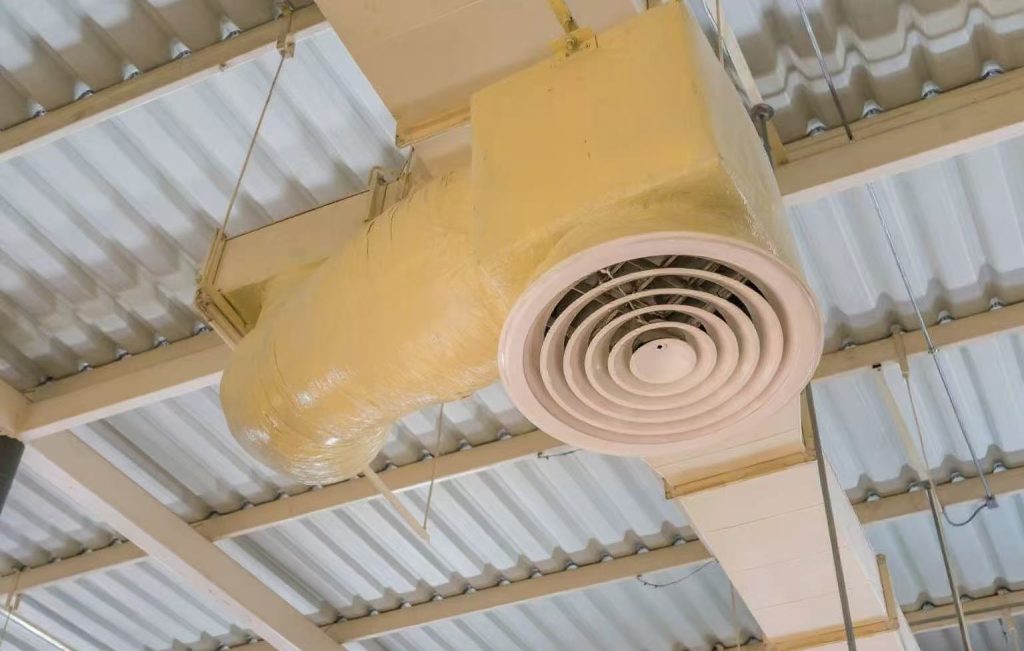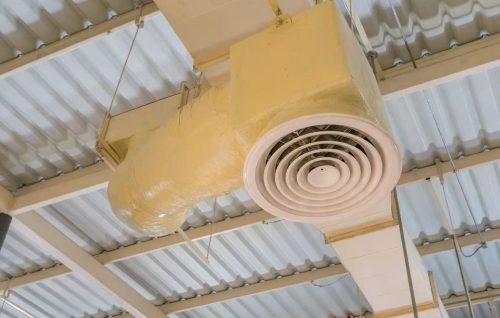-
What is an HVAC Diffuser? 2025-08-28
With excellent product quality and flexible customization capabilities, Fenglixing ventilators have been exported to more than 50 countrie
Read More -
Why do we choose aluminum alloy for product manufacturing? 2025-08-27
With excellent product quality and flexible customization capabilities, Fenglixing ventilators have been exported to more than 50 countrie
Read More -
How Can Ventilation Systems Help Save Energy and Reduce Emissions in the Green Building Trend? 2025-08-26
With excellent product quality and flexible customization capabilities, Fenglixing ventilators have been exported to more than 50 countrie
Read More
How Can Ventilation Systems Help Save Energy and Reduce Emissions in the Green Building Trend?

In the global wave of green buildings, the construction industry is transforming towards low-carbon, energy-saving, and environmental protection at an unprecedented pace. As a crucial component of building environmental systems, ventilation outlets may appear insignificant but actually hold tremendous potential for energy conservation and emission reduction. They serve not only as the "throat" for indoor and outdoor air exchange in buildings but also as a key link in achieving sustainable development goals for green buildings. For environmentally-conscious clients, understanding the core role of ventilation outlets in energy conservation and emission reduction will provide important decision-making basis for creating green buildings.

I.The Deep Integration of Ventilation Systems with Green Building Standards
Green building standards (such as China's 《Green Building Evaluation Standard》, the US LEED certification, and Europe's BREEAM system) all consider indoor environmental quality (IEQ), energy efficiency, and environmental sustainability as core indicators. The design and functionality of ventilation systems are directly related to the achievement of these indicators:
1. Indoor Environmental Quality (IEQ) Assurance:
Precision Airflow Organization:Through scientific air duct design and vent layout, the ventilation system achieves uniform distribution and rapid replacement of indoor air, effectively removing pollutants such as formaldehyde, VOCs, and PM2.5, ensuring fresh indoor air quality. Forexample, vents optimized using CFD (Computational Fluid Dynamics) simulation technology can eliminate air supply dead zones and prevent pollutant accumulation.
Multi-parameter linkage control:An intelligent ventilation system integrated with CO2, PM2.5, and VOC sensors can monitor air quality in real-time and automatically adjust airflow rates. It reduces operating power when conference rooms are unoccupied and increases ventilation frequency when rooms are densely occupied, ensuring both health and energy efficiency.
2. Increase in Energy Efficiency:
Heat Recovery Technology Core:Modern ventilation systems are equipped with heat exchange cores (such as honeycomb, plate, and rotary types), which can recover over 70% of heat energy between exhaust air and fresh air. They recover cooling energy in summer and heat energy in winter, significantly reducing the pre-treatment energy consumption of air conditioning systems for fresh air.
Low Resistance Desig:The streamlined air ducts and low-resistance air outlets reduce air flow friction and lower energy consumption of fan operation. Ventilation outlets made of special materials or with unique structures can reduce air resistance by up to 30% and extend equipment lifespan.
3. Environmental Support for Sustainability
Environmental Support for Sustainability:Ventilation components shall prioritize the use of eco-friendly materials such as recycled aluminum and recyclable plastics, thereby reducing resource consumption from the source.
Life Cycle Design:The modular structure facilitates disassembly and maintenance, extending product lifespan; recyclable components reduce waste.

II.The Outstanding Performance of Ventilation Ducts in Energy Efficiency
HVAC (Heating, Ventilation and Air Conditioning) systems account for as much as 40%-60% of total building energy consumption. As a crucial component of HVAC systems, ventilation systems have significant potential for optimization. Ventilation outlets contribute to energy efficiency through the following technical approaches:
1.Intelligent Control: Precise Demand Matching
AI Adaptive Algorithm:A machine learning-based ventilation system that can learn building usage patterns (such as office hours and personnel movement) and dynamically adjust ventilation strategies.
Remote Monitoring and Optimization:The cloud platform monitors the ventilation system's operation status in real-time and automatically generates energy-saving optimization plans.
2.Airflow Optimization Design: Reducing Energy Consumption for Transportation
Bionic Design:The streamlined air outlet inspired by bird wing structures reduces turbulence and noise while improving air delivery efficiency. For instance, a ventilation duct design referencing the flight principles of albatrosses has achieved a 20% reduction in air flow resistance.
Customization service:Customize the size and layout of ventilation outlets based on architectural space characteristics (ceiling height, layout, and purpose) to avoid over-design. For example, in large industrial buildings, jet nozzles can be used to increase the air supply distance to twice that of traditional designs.
III.Outstanding Contributions of Ventilation Systems in Environmental Protection
In addition to the indirect environmental benefits of energy conservation, ventilation systems play a direct role in reducing pollution emissions and improving the ecological environment.
1.Reduce VOC Emissions: Safeguarding Indoor Air Quality
Rapid Substitution Strategy:High-ventilation-frequency air vents combined with sealed air ducts can rapidly remove high concentrations of VOCs after decoration. Using a dedicated ventilation system can reduce formaldehyde concentration from 0.2mg/m³ to 0.03mg/m³, meeting stringent green building standards.
Air Purification Coordination:The ventilation outlet is integrated with HEPA filters and UV sterilization modules to build a triple purification system of "filtration + disinfection + emission".
2.Reducing Carbon Emissions: Supporting Carbon Neutrality Goals
Measure energy efficiency results:Through heat recovery and intelligent control, a single building can reduce CO2 emissions by hundreds of tons per year. If the ventilation system of a 100,000 square meter office building is properly designed, the annual energy savings are equivalent to the carbon sequestration capacity of planting 10,000 trees.
Powered by renewable energy:Some ventilation outlets are integrated with solar panels or utilize waste heat from air conditioning systems for power supply, achieving "self-sufficiency".
3.Environmental Protection and Recycling of Materials: Full Life Cycle Consideration
Low-carbon Material Certification:Choose environmentally friendly materials certified by EPD (Environmental Product Declaration) to ensure low-carbon emissions throughout the entire process from production to recycling.
Dismantlable and Remanufacturable:Modular design allows for replacement of aging components individually, rather than complete disposal of the entire system.

IV.How to Choose the Most Suitable Ventilation Solution.
You can refer to our previous blog post, which provides detailed information about the ventilation options and related content you can choose from in various situations.
In the grand blueprint of green buildings, air vents may be inconspicuous yet play an irreplaceable role. Through efficient heat recovery, they reduce energy consumption; through precise ventilation, they improve air quality; and through eco-friendly design, they minimize environmental impact, becoming a crucial "tool" for building energy conservation and emission reduction. Choosing advanced and high-performance air vent products not only creates healthy, comfortable, energy-efficient, and environmentally friendly building spaces for clients but also vividly practices the concept of sustainable development. On the journey towards carbon neutrality, let's start with every air vent to build a green future together!




